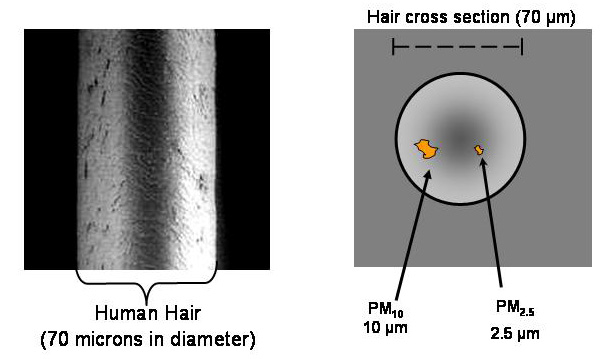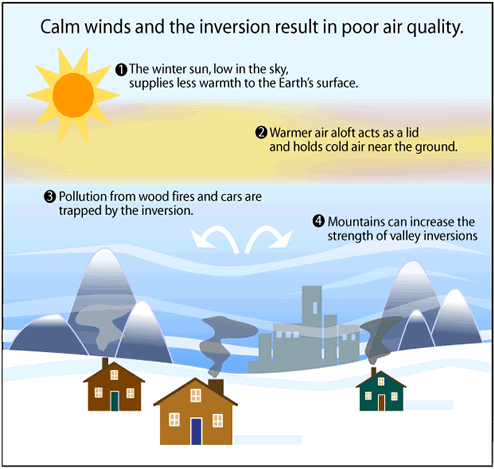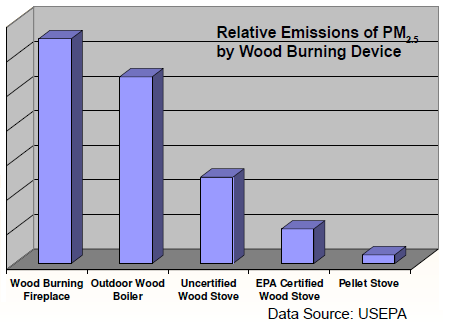Past Work
Southwest Region Air Quality Study
Current Air Quality Conditions for Keene, NH
What is Small Particle Pollution?
Small particle pollution is a complex mixture of extremely small particles and liquid droplets. These particles are much smaller in diameter than a human hair. They have a 2.5 micron diameter (PM2.5). PM 2.5 is so small it can seep into houses through closed doors and windows causing potential health problems

What is a Temperature Inversion?
On calm, cold, winter nights the Greater Keene area can experience temperature inversions. These inversions occur in valleys when warm air above traps cold air below. During these inversions, small particle pollution from wood stoves and other pollution sources is trapped and concentrated near the ground.

What Causes Small Particle Pollution?
One sources of small particle pollution is wood smoke, but not all heating methods are equal. See the comparison below of the relative emissions of small particle pollution from different wood burning methods.

What are the Health Impacts of Small Particle Pollution?
The small particles in wood smoke can be inhaled deep into the lungs, collecting in the tiny air sacs where oxygen enters the blood. Some particles are so small they enter the bloodstream. Inhalation of small particles can cause heart problems, irritate lungs and eyes, trigger headaches and allergic reactions, and worsen respiratory diseases such as asthma, emphysema, and bronchitis.
How You can Help
Burning wood efficiently can reduce smoke and save on heating costs. Keep your home and family safe by following these tips:
- Burn the right wood. Use only seasoned hardwood. Burning wet or “green” wood that has not been properly seasoned creates more smoke and less heat when burned. Firewood should be seasoned for at least six months.
- Use the right stove. It’s best to use an EPA certified stove, installed by a qualified technician. If you can’t buy a new woodstove, be sure your stove pipe is cleaned at least annually. Clean ashes out regularly and make sure all gaskets are in good shape to keep the stove air tight.
- Burn the right way. Maintain a bright, hot fire and do not let it smolder. More smoke means decreased efficiency and more creosote buildup in the chimney which could lead to a chimney fire. Annual cleaning reduces creosote buildup. Burning wood safely and efficiently will also save money.




 EPA Burnwise
EPA Burnwise Project Poster
Project Poster